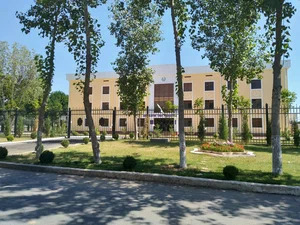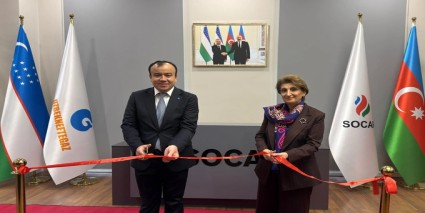In Uzbekistan, authorities proposed the amendments to the Family Code prohibiting marriage between close relatives. The amendments were posted by the Committee on Family and Women's Affairs for public input.
The amendments proposed to prohibit marriage between relatives in the second, third and fourth degrees of relationship. As an exception, marriage is permitted if a DNA test gives a permitting result. The Committee refers to the experience of South Korea, Russia, Switzerland, Great Britain, Ukraine, the USA, neighboring and other countries.
Lateral relatives are brothers and sisters, their children, brothers and sisters of father and mother, their children, brothers and sisters of grandparents, their children, and so on.
Now in Uzbekistan, marriage is not allowed between relatives in a direct ascending and descending line, between full and half brothers and sisters, as well as between adoptive parents and adopted children.
While, the amendments also proposed to adopt liability for violating the procedure for undergoing a medical examination before marriage.
Statistics
Earlier, authorities proposed to ban marriages between collateral relatives in 2022.
During the second half of 2021 (July-December), 1,210 marriages between close relatives - cousins вАЛвАЛ- were registered in Uzbekistan. Breaking downy province, more than half of all cases - 58% - occurred in just two provinces - Surkhandarya (343) and Kashkadarya (371). Reportedly, among children in such marriages there are children with congenital anomalies under the age of 1 year, deformities and chromosomal disorders.
The number of children with disabilities identified before the age of 1 year increased from 2592 in 2018 to 3374 in 2020, or by 30.1%, congenital anomalies (malformations) under the age of 1 year, deformities and chromosomal disorders - with 1093 in 2018 to 1292 in 2020, or 18.2%.
According to the latest data provided in the analytical note to the draft amendments, the number of children with genetic diseases is increasing every year due to the creation of families between close relatives.
In 2023, the number of children born with developmental defects and hereditary diseases was 1,741, the intensive indicator (prevalence value) was 1.8%. This figure was 1.8% in 2021 and 1.9% in 2022. The percentage of children with such diseases remains unchanged. The intensive rate of children with developmental defects and hereditary diseases was the highest in Namangan province - 3.3%, in Syrdarya and Khorezm provinces - 2.5%, in Tashkent province - 2.4% and in Fergana province - 2.3%.
The share of children with congenital diseases in Karakalpakstan is 4.1%, but the main etiological factor in these cases is the harsh environmental conditions of the province.
According to the analysis, in 2023, 9.7% of children born with congenital defects and genetic diseases were born from the marriage of close relatives. In 2021, this figure was 9.1%, in 2022 - 8.3%.
The highest rates are in Surkhandarya - 31.6% (in 2021 - 29.5%, in 2022 - 27.6%), in Kashkadarya - 26% (32.5% and 27.3%), Syrdarya - 13 % (13.4% and 8.5%), in Andijan province - 12% (6.2% and 8%), in Samarkand province - 10.3% (13.3% and 14.5%), in Bukhara province - 10.1% (8.8% and 8.9%).
Over the five months of 2024, 6,660 children were hospitalized at the Republican Specialized Pediatric Center, of which 28.9% were in the neurological department, 21.5% in the gastroenterology department, 34.9% in the otorhinolaryngology department were treated for cystic fibrosis (a genetic disease characterized by damage to the exocrine glands, severe dysfunction of the respiratory organs). 28.9% of the parents of these children were close relatives.
Today in Uzbekistan, 6,526 (5,856 in 2022) orphans with rare genetic orphan diseases are registered, including 278 (228) with cystic fibrosis, 49 (44) with systemic juvenile arthritis, 387 (346) with thalassemia , 940 (717) - hemophilia, 370 (356 people) - epidermolysis bullosa, 158 (72) - spinal muscular atrophy (SMA), 425 (385) - phenylketonuria, 1896 (1686) - with congenital hypothyroidism.














